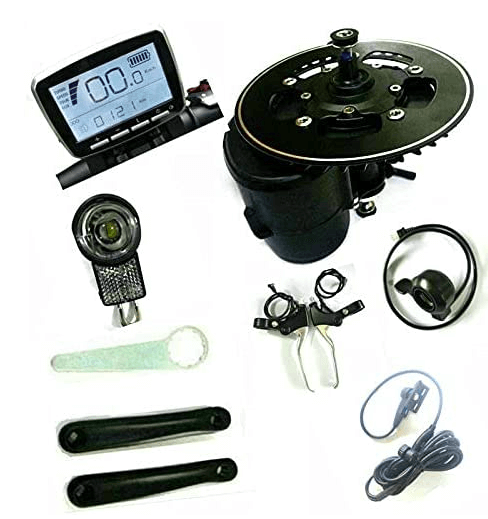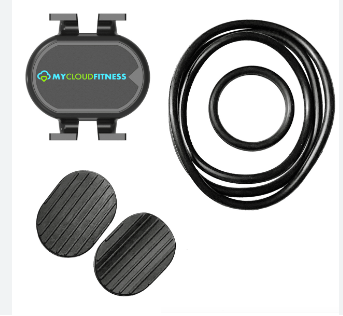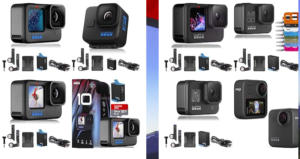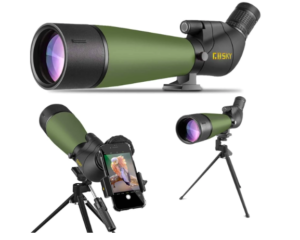
Types of ebike sensors.
What are the different types of ebike sensors?
There are several types of sensors commonly found on electric bikes, including:
- Speed sensor: This sensor measures the speed of the bike’s wheel and sends that information to the bike’s controller, which then adjusts the power output of the electric motor accordingly.
- Torque sensor: This sensor measures the amount of force being applied to the pedals and sends that information to the bike’s controller, which then adjusts the power output of the electric motor accordingly.
- Pedal assist sensor: This sensor detects when the rider is pedaling and sends a signal to the bike’s controller to turn on the electric motor.
- Cadence sensor: This sensor measures the rider’s pedaling rate and sends that information to the bike’s controller, which can then adjust the power output of the electric motor accordingly.
- Power sensor: This sensor measures the power output of the electric motor and sends that information to the bike’s controller, which can then adjust the power output of the electric motor accordingly.
- Tilt sensor: This sensor detect the angle of the bike and sends a signal to the bike’s controller, which then adjusts the power output of the electric motor accordingly
- Throttle: This is the type of ebike sensor found on a handlebar-mounted control that allows the rider to adjust the power output of the electric motor independently of pedaling.

All these sensors work by using different technologies such as Hall effect, Magnetic, and Optical sensors. These sensors detect the changes in their environment and send the data to the controller for further processing.
What does a hall sensor do on ebike?
A Hall sensor is a type of ebike sensor that is commonly used on electric bikes to measure the rotation of the bike’s cranks. The Hall sensor detects changes in a magnetic field and generates an electrical signal that corresponds to the position of the magnet.
In the context of an ebike, the Hall sensor is typically located on the bike’s crank arm or bottom bracket and is used in conjunction with a magnet that is attached to the bike’s sprocket or chainring. As the cranks rotate, the magnet passes by the Hall sensor, generating an electrical signal that corresponds to the position of the magnet.
This signal is then sent to the bike’s controller, which uses it to determine the speed and position of the cranks. This information is then used to control the power output of the electric motor, providing the rider with an efficient and natural riding experience.
Hall sensors are preferred in ebike because they are small, lightweight, and require very little power to operate, which makes them ideal for use in battery-powered devices such as electric bikes. They are also relatively inexpensive and can be easily integrated into the bike’s existing electronics.
In summary, a Hall sensor on an ebike is a device that detects changes in a magnetic field and generates an electrical signal corresponding to the position of the magnet. This signal is then used by the bike’s controller to determine the speed and position of the cranks, which is used to control the power output of the electric motor. Hall sensors are a reliable and cost-effective way of measuring the rotation of the bike’s cranks, making it an important component of an e-bike.
What is Hall effect in simple words?
The Hall effect is a phenomenon where a voltage difference, known as the Hall voltage, is generated across a conductor when it is placed in a magnetic field. This effect was discovered by an American physicist named Edwin Hall in 1879.
In simple terms, the Hall effect is a way to measure the strength and direction of a magnetic field by placing a conductor, such as a metal wire, in the field and measuring the voltage that is generated across it. The voltage that is generated is proportional to the strength of the magnetic field and the angle at which the conductor is placed in the field.
The Hall effect is used in a variety of applications, including in the production of electronic devices such as sensors, transducers, and magnetometers. These devices are used in a wide range of industries, including automotive, aerospace, and manufacturing. They are also used in scientific research to study magnetic materials and in medical imaging to image the human body.
In summary, Hall effect is a physical phenomenon where a voltage difference is generated across a conductor when it is placed in a magnetic field. This effect is used in electronic devices such as sensors and magnetometers to measure the strength and direction of a magnetic field. They are used in a wide range of industries and scientific research.
Above are the Types of ebike sensors to add on your ebike for a more fun ride.
Related topics






